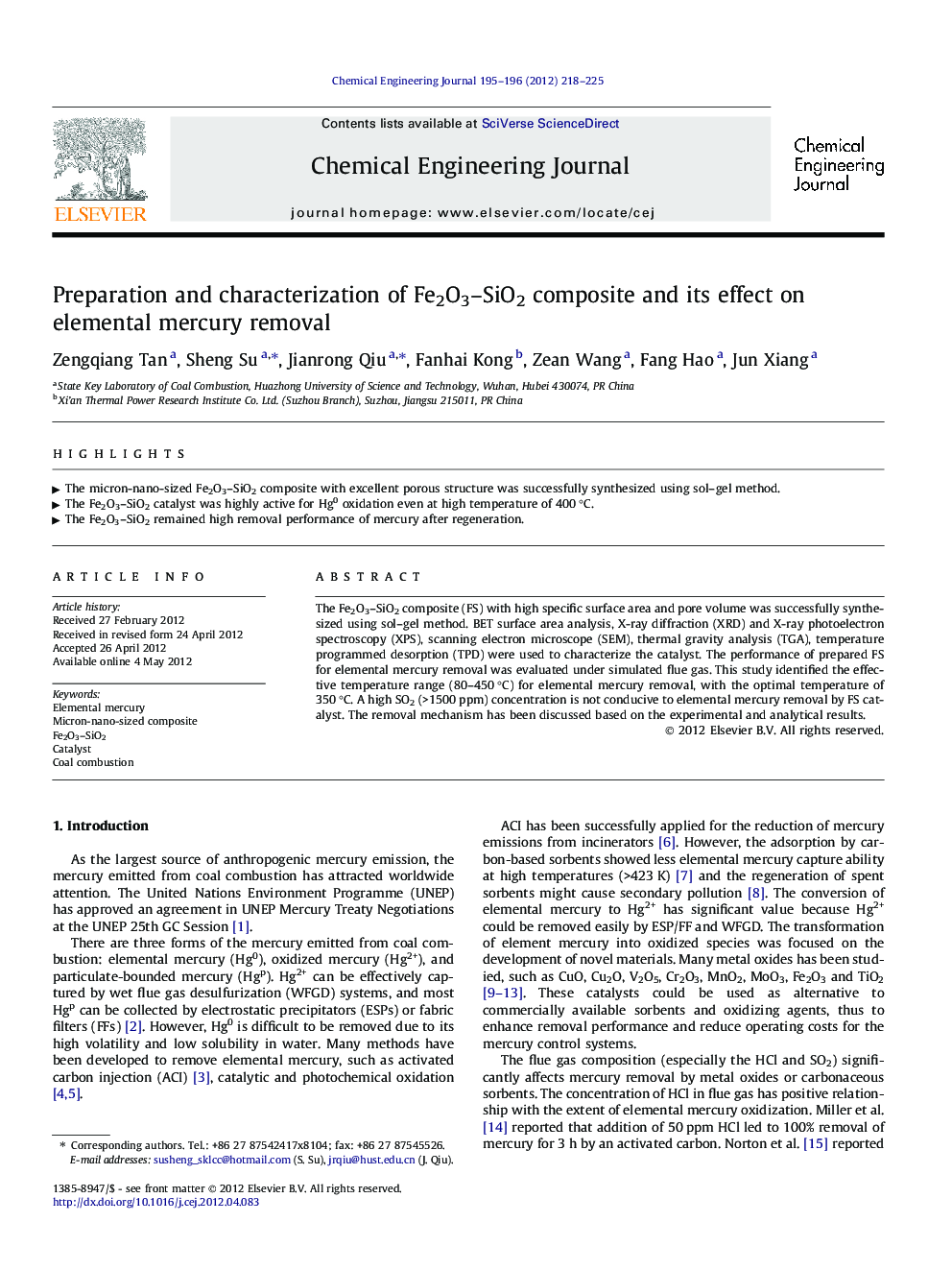| Article ID | Journal | Published Year | Pages | File Type |
|---|---|---|---|---|
| 149750 | Chemical Engineering Journal | 2012 | 8 Pages |
The Fe2O3–SiO2 composite (FS) with high specific surface area and pore volume was successfully synthesized using sol–gel method. BET surface area analysis, X-ray diffraction (XRD) and X-ray photoelectron spectroscopy (XPS), scanning electron microscope (SEM), thermal gravity analysis (TGA), temperature programmed desorption (TPD) were used to characterize the catalyst. The performance of prepared FS for elemental mercury removal was evaluated under simulated flue gas. This study identified the effective temperature range (80–450 °C) for elemental mercury removal, with the optimal temperature of 350 °C. A high SO2 (>1500 ppm) concentration is not conducive to elemental mercury removal by FS catalyst. The removal mechanism has been discussed based on the experimental and analytical results.
► The micron-nano-sized Fe2O3–SiO2 composite with excellent porous structure was successfully synthesized using sol–gel method. ► The Fe2O3–SiO2 catalyst was highly active for Hg0 oxidation even at high temperature of 400 °C. ► The Fe2O3–SiO2 remained high removal performance of mercury after regeneration.
